Mamiya M645 Pro User manual
- Category
- Camera accessories
- Type
- User manual

Instructions

Congratulations on your purchase of the Mamiya 645 PRO
Mamiya pioneered the 6x4.5 film format and introduced the world’s first 645
SLR in 1975. The 645 PRO is the latest masterpiece in this series and
incorporates all the latest mechanical, electronic and optical advances. Its
external appearance, too, has been modernized and its ergonomic design
further enhanced.
We are sure that you will enjoy the many advantages this camera and its
accessories offer and want to particularly mention:
The 645 PRO has a built-in self-timer (delayed shutter release) which will also
facilitate time exposures. Attaching special leaf shutter lenses will automati-
cally set the focal plane shutter to
1/8
sec. Heavy duty gears connect to the
improved Power Drive Grip WG401. This grip also
automatically cocks the lea
f
shutter lenses and permits remote control.
The AE Prism Finder FE401, specially created for this camera, automates
exposure and shows LED safety signals. 35mm film holders now come with
panoramic adapters. A super fast 300mm f/2.8 APO lens was also designed
for this camera.
We are convinced that your camera will serve you well, because we have
designed it for heavy professional use. However, we ask you to please read
all operating instructions carefully before you put your equipment to work, in
order to ensure proper operation and maximum results.
This manual covers the
basic camera. Sepa-
rate instructions are
supplied with all sys-
tem accessories, in-
cluding lenses,finders,
film holders, etc.
For additional informa-
tion please feel free to
contact your author-
ized Mamiya dealer or
the Mamiya importer in
your country.
1

Special
Features
of Mamiya 645
PRO
....................3
Names
and
Function
of Parts
..................................7
Attaching and Removing Lenses
.........................
10
Attaching and Removing Roll Film Holders
........
.11
Attaching
and
Removing
Viewfinders.................12
Attaching and Removing the Film Advance
Crank
.........................................................................
13
Inserting
Battery and
BatteryCheck
........
...............14
Shutter
Release Selector
.......................................
16
A Trial Familiarization Test
...................................
17
Film Loading
...........................................................
18
Advancing Film to the
First Exposure
................
.21
Aperture
Ring/Stop-downOperation
...................23
Focusing
................................................................
.24
Depth-of-field
.........................................................
.25
Film
Transport and
Film
Unloading
....................
.26
Using the Self-timer/Delayed Shutter Release.
.
..2 7
Multiple Exposures
...............................................
.27
Time
Exposures
....................................................
.28
Mirror
Lock-up
Photography
...............................
.29
Infrared Photography...........................................
.30
Using Flash
............................................................
.31
Using a Tripod
.......................................................
.32
Holding the Camera Steady and Securely..
........
.33
Attaching and
Removing the Neck Strap
...........
.34
Specifications
........................................................
.35
Trouble Shooting
..................................................
.37
Basic Accessories
................................................
.39
System Chart
.........................................................
.41
Storing
and
Checking
the
Camera
......................
.42
Features and specifications subject to change without notice.
2

3 x More Negative Area Than the 35mm Format
Plus
Superior Image
Quality
From Mamiya World-
Class Lenses
The
6x4.5cm
format offers approx. 3 times more image
area than the 35mm
(24x36mm)
format, Man’s vision is
horizontal and rectangular.
Film Holders are rectangular and so are most pictures in
them. The
6x4.5 format
is also large enough to be viewed
without a magnifier and its aspect ratio (horizontal
/
vertical)
is ideal, requiring minimum cropping. Mamiya’s high
performance medium format lenses assure sharpness
and beautiful color fidelity.
2
Sturdy, Versatile, Safe and Highly Reliable Body
-
Tailored to Satisfy Pro Needs
-
Introduced in 1975 to not only provide an alternative to
the 35mm format, but to afford the user with advanced
versatility given its much larger format, the Mamiya 645
Series is constantly being upgraded. Elements such as
speed and handling plus a host of other special features
have been enhanced to satisfy the needs of most de-
manding professionals.
Two new convenient safety features have been added to
the 645 PRO in the form of state-of-the-art optoelectronics
which immediately identifies problems with the shutter
(i.e. when it will not release) when the AE Prism Finder
FE401 is used. Whether these malfunctions develop from
failure to draw out the Dark Slide, or if there are problems
in film take-up, the LED will indicate the source of the
trouble. With these new advancements, Mamiya believes
the most demanding pro will be more than satisfied with
the new edition 645.
Enhanced Interchangeable Roll Film Holder System
3
-
Enables Polaroid and Even 35mm Panoramic
Photography
-
The 645 PRO features an interchangeable film holder
system capable of using a far wider range of roll film
holders than before. Depending on the application, the
system can be quickly attached to or detached from the
camera, ensuring the ability to catch even fast changing
scenes. It also features fail-safe devices including, for
example, one that warns when you have failed to take out
the dark slide when the AE Prism Finder FE401 is being
used.
3

Interchangeable Viewfinders
1. AE Prism Finder FE401
The AE (automatic exposure) Prism Finder FE401 fea-
tures three modes of TTL metering, including automatic
switching from center-weighted averaging to spot me-
tering. It also has a
+/-3EV
exposure compensation ad-
justment.
2. Prism Finder
PF401
The Prism Finder
PF401
is without metering electronics
and designed for manual photography mode. Both Prism
Finders show an unreversed, upright image and are ideal
for eyelevel photography.
3. Waist Level Finder N
The Waist level Finder N is desirable for low angle
photography and particularly for horizontal composition.
A self erecting hood with built-in magnifier shields
groundglass from all ambient light. A built-in sportsfinder
permits eyelevel viewing and is ideal for action photog-
raphy.
Bright, Dynamic Images Visible on the Focusing
Screen
-
5 Selectable Types Available
-
The 645
PRO can reproduce bright, dynamic and sharp
images on the focusing screen, enabling optimum com-
position to be obtained according to the photographic
purpose. In addition, the 645 PRO greatly enhances
focusing.
5 types of focusing screens are available to facilitate
photographing a wide variety of subjects.
6
A Comprehensive Series of Interchangeable Lenses
- Sharp Images and Outstanding Color Balance -
There are an amazing variety of interchangeable lenses
in the PRO 6 x 4.5 format series. Mamiya has concen-
trated an all-out effort on the systematic production of
lenses in an effort to satisfy a multitude of needs. All
lenses are multi-coated to eliminate flare and ghosting
even under the most adverse light conditions. While the
series now also features three leaf shutter lenses, all
lenses exhibit the utmost in color balance, high
resolu-
4

tion and crystal clear definition. A feature lens is the new
300mm f/2.8 APO lens which eliminates chromatic aber-
ration and produces photos with the sharpest definition.
Given the wide variety of lenses in the 645 PRO Series,
they greatly expand the world of images that are possible.
Auto winding with the Power Drive Grip WG401
This Power Drive Grip WG401 has been specially de-
signed for heavy duty, motorized operation with the 645
PRO. It also permits automatic shutter cocking of the leaf
shutter lenses and can be remote controlled. Another
feature, not available previously is the following:
When attaching a partially exposed film holder (in which
the film has not been advanced to a new frame), to the
645 PRO equipped with the Power Drive Grip WG401, a
built-in camera mechanism will automatically advance
the film to the next frame, when the shutter release is
activated, either on the camera body or on the Power
Drive Grip WG401.
8
New Automatic Leaf Shutter Lenses for added
versatility.
55mm (Wide Angle), 80mm (Standard) 150mm
(Telephoto) lenses
These
lenses are all in Seiko #0 shutter, offer the advan-
tages of syncroflash photography at all shutter speeds
1/
30,
1/60,
1/125,1/250 and
1/500sec.
The optional Power
Drive Grip WG401 will automatically cock the shutters as
it transports the film and moves the mirror.
The camera’s focal plane shutter must be set at 1/8 sec.
for leaf shutter mode operation. The leaf shutter lenses
can do it automatically.
5

A Broad Accessory System
For Specialized Applications
A useful accessory system to serve the specialized
needs of the photographer. It includes Auto Bellows and
Auto Extension Rings for close-up and copying work;
Infrared Remote Control for studio and nature photogra-
phy; External Battery Case for operating in cold sur-
roundings; Camera Grips for convenient holding and
more.
10
Other Features
<Mirror Lock-up>
After focusing, the
Mirror
can be locked up before making
an exposure. This is convenient when the camera is used
at slow shutter speeds and is mounted on a tripod for
telephotography, copy work, etc., since even
a very
small
amount of vibrations should be eliminated.
<Self-timer>
Self-timer for delayed shutter release. When activated it
will light a red pilot lamp in the front of the camera for eightlamamp in the front
seconds and will blink for two seconds before triggering
the shutter.
<Time Exposure>
Time exposures are made by utilizing the Self-timer and
the “B” shutter setting. A new power saving circuit design
switches the battery off and extends is life.
6

Focusing Screen
N
13 Gold Plated Contacts
These contacts interface the
Aperture Ring Couping Pin
This
pin
is fitted into the
Ex-
posure
Meter Coupler of the
lens, to
transmit the aperture
data
to
the AE Prism Finder.
AEPrism
Finder with the ISO
dial on the film holder and
the shutter speeds.
Hot-shoe (X contact)
A
cordless flash can be used
Battery Check Lamp
Focusing Screen Release Pin
When
you
want to change
the screen. slide this pin to
the left and
remove
the
screen.
with
this
shoe.
Lens Release Button
collar is turned to the
red dot.
Auxiliary Release Contact
When the cover is moved to
the left. the contact appears.
This contact is used
for
con-
nections of external
releases
such as a special hand
grip
and remote control unit.
Mirror
/
*
Never touch the surface of
the mirror.
Battery Check Button
LED displays the present
battery condition.
7

Finder Coupling Panel (Front)
Finder
Coupling
Panel (Rear)
Electric Contact for Film
Holder
This contact receives film
sensitivity data from the film
holder.
Film Holder Mount
Film Holder Coupling
Pin
Shutter Curtain
Exposures are controlled by
opening and closing the cur-
tain
Film Holder Mounting
/
Bracket
Shutter Speed Dial Lock
Release Button
This
button is used for un-
locking the Shutter Speed
Dial from an AE position.
Shutter Speed Dial
This
dial
selects the shutter
speed, and switches the
op-
eration mode from AE
to
manual photography.
Neck Strap Lug
Film Advance Crank
A
Single complete turn cocks
the shutter and advances the
film for each exposure.
Multiple Exposure Lever
When this lever is set at
“MULTI”, film
is not advanced
even
when the Film Advance
Crank
is
turned.
thus
allow-
ing multiple exposures on the
same film frame.
8

Tripod Socket
1/4" tripod socket. To con-
vert to a
3/8" socket, remove
the small screw in the base of
the socket. Then remove the
bushing. See page 32.
Distance Scale
The camera to subject dis-
tance can be set or confirmed
with this scale.
Lens Alignment Dot
Depth-of-field Scale
Provides a quick reading of
depth-of-field for various ap-
ertures and distances.
Exposure Meter Coupler
This coupler is engaged with
the Aperture Ring Coupling
Pin, transmitting diaphragm
information to the AE Prism
Finder.
Battery Chamber Cover
Battery Chamber Cover
Latch

Removing the Front Body Cap and
Rear Cover
Attaching the Lens
Removing the Lens.
First remove the Front Body Cap in
the direction of the arrow, while
pushing the Lens Release Button
8
backwards as indicated by arrow.
Rear Body Protective Cover can be
readily removed by depressing the
part
of
@
as shown in the illustration.
Line up red Lens Alignment Dot
@
against red camera Alignment Dot
(C) and gently insert the lens into the
camera body. Then turn the lens
clock wise, as indicated by arrow,
until it clicks into place. Make sure
that the Aperture Ring Coupler Pin
is engaged with the Exposure Meter
Coupling Pin
@,
which sticks out
under the
Mamiya name plate of the
camera.
While pushing lens release button back-
wards, turn lens counterclockwise.
(Same procedure as removing
body
cap).
*
When the Aperture Ring Coupler Pin is engaged
by the exposure meter coupling pin lever, F/stop
data is conveyed to the AE Prism Finder.
10

Attaching the Roll Film Holder
Removing the Roll Film Holder
*
Remove the Roll Film Holder
Cover.
1. While spanning the Roll Film Holder
between your thumb and middle fin-
ger, holding it on the rubberized fin-
ger rests, carefully align its Film
Holder Mounting Bracket with the
corresponding center clip of the
camera body.
2. While keeping this alignment, press
the upper part of the Roll Film Holder
against the camera body, so that it
clicks into place by engaging the
spring loaded twin camera catch.
1. Insert the Dark slide
into
the slot
marked by White Lines on the side
of the holder.
2. Push the lower one of the Film
Holder Detaching Lock Release
Button (A) downward, while simulta-
neously pushing the Film Holder
Detaching Button
@I
inward.
*
If the
Dark
Slide is not inserted,
the safety lock will prevent the
holder from being removed.
*
The Dark Slide can be inserted
in the Roll Film Holder up to the
Green Line, marked on the slide,
without affecting the image.
Green Line
11

Attaching the Finder.
Removing the Finder
The same procedure applies to all
finders. The illustrations shows
the AE Prism Finder
FF401.
Lift the Upper Cover from the camera
body.
Insert the Attaching Latches (A) of the
finder into the Finder Coupling Panel
(B) in the front wall of the body. Press
the finder down until the rear latch
locks securely in place.
Spanning
the finder with your fin-
gers, push the button on its right side
marked with a downward pointing
arrowQ,downward,
while pushing
the other button, on the left
side@,
inward.
12

Removing the Crank
Push
the
lock Lever (A) on its bottom
in a forward direction as far as
it
will
go (see illustration).
Attaching the Crank
With the flat part, having a White You may choose six different crank
Index Line, on top, line the Crank up
starting positions to suit
your
prefer-
against its mounting plate on the side
ence.
The orientation of the crank
of the body and push Film Advance
proper against its base, before it is
Crank Lock Lever backward.
attached to the camera, will be
maintained when the entire assem-
bly is locked into place.
13

Inserting the Battery
The camera will not function without a battery
The camera will not function with-
out a battery
With your fingernail, pull the Battery
Chamber Cover latch,
on the bottom
of the camera body, as indicated by
the arrow in the illustration. Lift the
cover off. The camera requires a 6V
alkaline, silver oxide or lithium bat-
tery. It is a good idea to wipe the
battery terminals before insertion to
assure proper contact. Observe po-
larity. + position is marked in battery
cavity.
InserttheOsidefirstatasteep
angle and then push entire battery
into place, making sure that the lift
ribbon wraps around battery. Close
cover by inserting twin-prong end first
and pushing it down.
*
Be particularly careful not to let
the lift ribbon cover
theOterminal.
Checking Battery
Press Battery Check Button “B.C.”
(A) on lower front of the camera.
Battery Check Lamp (B) on top op-
posite side should light. Bright light
indicates good condition. Blinking
light means replace battery. No light
means battery is dead or improperly
inserted.
14

Important:
1.
The sealed, new battery which is
supplied with this camera may have
been subject to storage conditions
which have reduced its service life.
Therefore it is desirable to replace it
with a fresh battery as soon
as
pos-
sible.
2. Carefully wipe the battery con-
tacts before inserting into the cham-
ber. Failure to do so may result in
poor electrical contact and conse-
quent malfunctioning of the camera.
3. Always remove battery when
camera is not used for a while. Al-
ways carry spare batteries.
4. Battery life differs, depending on
type, age, storage condition, ambient
temperature, frequency of
use
etc.
Battery strength will be indicated
by whether the light:
Glows . . .
..Battery
strength is suf-
ficient.
Blinks
. . . ..
Battery
capacity has
dropped below the al-
lowable level. (Replace
the battery.)
Does not light
. . . . ..
The
camera
will not work. (Replace
the battery.)
15

For normal operation set the White
Dot of the Shutter Release Selector
(A) against the White Square Dot
Cl.
When set to the Red Dot
0,
the
Release Button is locked.
*
Select this mode if the camera
will be idle for a period and to
prevent accidental shutter re-
lease. Also when the Power Drive
Grip is used.
When set to the yellow clock symbol
0
the self-timer is operative. See
page 27 and 28 for further instruc-
tions.
Operating
the shutter
Release
Button
1. The Shutter Release Button
@
functions in two steps. Gentle pres-
sure will light the metering informa-
tion display if the AE Prism Finder is
used. Continued pressure will re-
lease the electromagnetic shutter.
2. If the film is not completely ad-
vanced, if the Dark Slide is not with-
drawn or if the battery is dead, the
shutter will not function, even when
the Shutter Release Button is
pressed. This will also be the case if
the Shutter Speed Dial is set to “A”
or
“AEL”
when the AE Prism Finder
is not attached.
3. After releasing the shutter, the
Film Advance Crank will automati-
cally unlock and be ready to advance
the film.
16

1. Attach the Roll Film
Holder to the camera body.
2. Pull out the Dark Slide
and place it into its Storage
Slot.
3. Set the Shutter Speed
Dial to any other position
than ”A” or ”AEL”.
When the
AE Prism Finder is not
mounted on the camera, the
shutter will not release if the
Shutter Speed Dial is in the
“A” or
“AEL”
position.
*
When only the body is tested, the familiarization
checkout can be made either in the “MULTI” or
0
(normal mode).
4. Set the Multiple Expo-
sure Lever on the body to
the “MULTI” position.
5. Set the Shutter Release
Selector to
“0”
(normal
mode), and press the Shut-
ter Release Button.
6. After the shutter has been
released, advance the Film
Advance Crank one com-
plete revolution and the next
frame will be ready.
____~~~
The empty film spool included with the film holder
is
supplied with a vinyl tube. When placed in the take-up
compartment it engages the film sensor and makes
the holder function as if it is loaded with film. Please
remove the tube after your test.
17

1. While pushing the Back Cover
Lock Release Button (A) downward,
press the Back Cover Opening
But-
ton, and the Back Cover will open.
When you load film
for
the first time,
remove
and discard the protective
paper cover which is attached to the
in the
roll
film holder.
2. While squeezing in on both sides
of the Release Latch
(A)
pull the Roll
Film Insert out of the camera body.
At that time,
move
the empty spool
in the upper part down to the lower
spood
compartment.
18
3.
Align
the right-hand side of this
empty spool with the lower Spool
Stud (A) (convex). Slide the spool
into position making sure that the
left-side of the spool is properly held
by the Spool Clip.

4. In the same manner, insert a roll
of film in the upper compartment. At
that time, check that the film leader
paper is set as shown in the photo
above. (The leader paper inside is
facing outward on the pressure plate.
Note that the film direction is wrong if
the leader paper is facing inward.)
5. Pull out some of the leader paper.
Insert the tip of the leader paper into
the slot of the lower Take-up Spool.
19
Gently rotate the take-up spool as
shown in the photo until the start
mark on the leader paper is aligned
with the start mark
(A)
on the spool
clip.
*
Correctly align the start marks
with each other, making sure that
the film feeds properly. When
im-
proper
feeding occurs, the proper
number of exposures may not be
taken.
*
Avoid exposing the film to di-
rect sunlight when inserting or
removing film.
Page is loading ...
Page is loading ...
Page is loading ...
Page is loading ...
Page is loading ...
Page is loading ...
Page is loading ...
Page is loading ...
Page is loading ...
Page is loading ...
Page is loading ...
Page is loading ...
Page is loading ...
Page is loading ...
Page is loading ...
Page is loading ...
Page is loading ...
Page is loading ...
Page is loading ...
Page is loading ...
Page is loading ...
Page is loading ...
Page is loading ...
-
 1
1
-
 2
2
-
 3
3
-
 4
4
-
 5
5
-
 6
6
-
 7
7
-
 8
8
-
 9
9
-
 10
10
-
 11
11
-
 12
12
-
 13
13
-
 14
14
-
 15
15
-
 16
16
-
 17
17
-
 18
18
-
 19
19
-
 20
20
-
 21
21
-
 22
22
-
 23
23
-
 24
24
-
 25
25
-
 26
26
-
 27
27
-
 28
28
-
 29
29
-
 30
30
-
 31
31
-
 32
32
-
 33
33
-
 34
34
-
 35
35
-
 36
36
-
 37
37
-
 38
38
-
 39
39
-
 40
40
-
 41
41
-
 42
42
-
 43
43
Mamiya M645 Pro User manual
- Category
- Camera accessories
- Type
- User manual
Ask a question and I''ll find the answer in the document
Finding information in a document is now easier with AI
Related papers
-
Mamiya Leaf 645 PRO TL User manual
-
Mamiya Leaf m 645 super User manual
-
Mamiya 645 E User manual
-
Mamiya 645E User manual
-
Mamiya M645 1000S Instructions Manual
-
Mamiya Leaf M645 1000S User manual
-
Mamiya M645 1000S User manual
-
Mamiya RZ67 Instructions Manual
-
Mamiya 7 II User manual
-
Mamiya FE401 Instructions Manual
Other documents
-
D ADDARIO AUTO LOCK Operating instructions
-
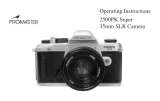 Promaster 5371 User manual
Promaster 5371 User manual
-
Polaroid 600 SERIES User manual
-
Exakta EXA 1 User manual
-
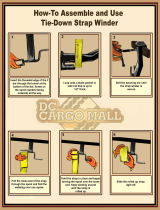 DC Cargo Mall 8542123060 User guide
DC Cargo Mall 8542123060 User guide
-
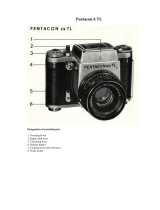 Pentacon Six TL Operating instructions
Pentacon Six TL Operating instructions
-
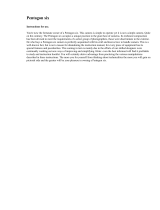 Pentacon Six Operating instructions
Pentacon Six Operating instructions
-
Carson HF-66 User manual
-
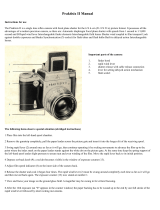 Praktisix II User guide
Praktisix II User guide
-
Contax 645 User manual















































